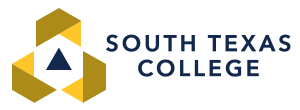The primary responsibility for managing the classroom environment rests with the course instructor; this includes instances of academic dishonesty. Each course instructor determines what behavior is appropriate or not appropriate in their classroom. Examples of inappropriate behavior include speaking on a cellular telephone, using a camera during class, persistently speaking without being called upon, refusing to be seated, and disrupting the class by leaving and entering the room without authorization.
South Texas College supports the right of faculty to maintain discipline in the classroom. When a student is alleged to have committed an act academic dishonesty, been disruptive in the classroom, clinical or other academic setting, the course instructor or clinical supervisor may move to sanction the student, which may include temporarily or permanently removing that student from class according to procedures outlined in this Code of Student Conduct.
- What is Plagiarism
- Detecting Academic Dishonesty
- Managing Academic Dishonesty
- Importance of Reporting Academic Dishonesty
- Frequently Asked Questions
- Creating a Climate of Academic Dishonesty: Tips to Prevent Cheating
- Ten Principles of Academic Integrity for Faculty
